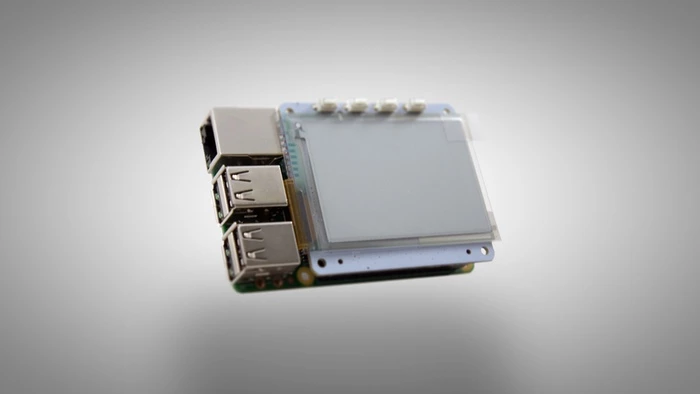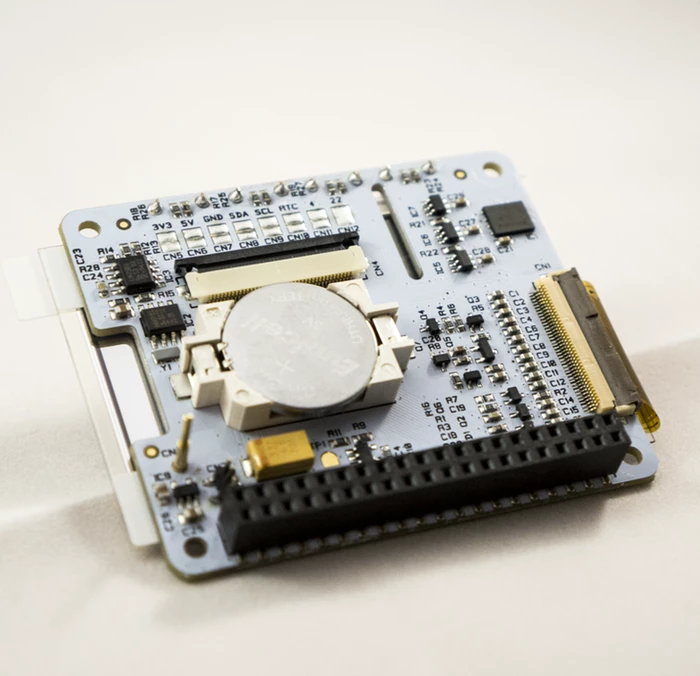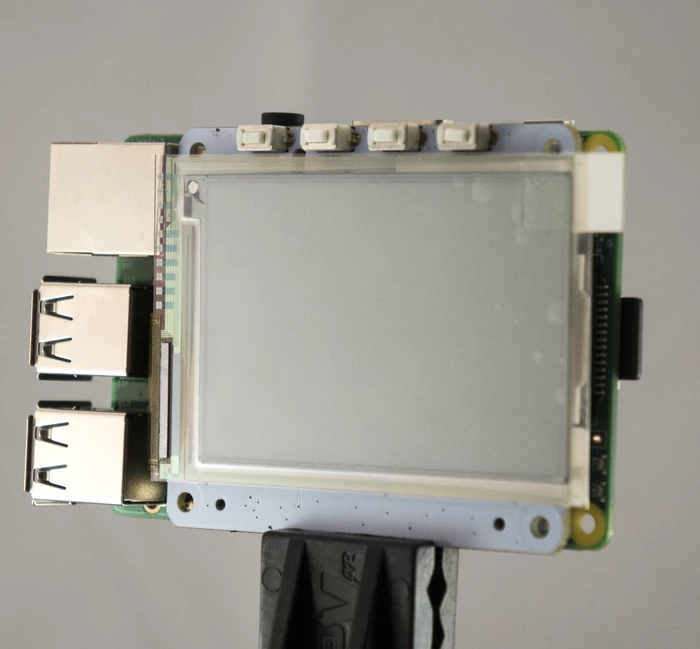British company Pi Supply has created a low-power, low-cost e-ink display module for the Raspberry Pi do-it-yourself single-board computer. PaPiRus, as it's called, comes in three interchangeable screen sizes (1.44, 2.0, or 2.7 in), and like all e-paper devices it's readable in sunlight and it remains on (which is to say it can display a static image) for a very long time without power. Its creators note that it is particularly well suited to data-logging applications and outdoor displays.
PaPiRus fits the recently-released Raspberry Pi 2 Model B as well as prior models A+ and B+. It comes with 32 megabits of flash memory, along with a battery-backed real-time clock with a wake-on-alarm functionality (if connected via an optional "pogo pin" to the Raspberry Pi "RUN" header). It also has a temperature sensor and a general-purpose input/output (GPIO) breakout connector, as well as four optional slimline switches that fit on the top of the board.
The 1.44-inch (3.66-cm) screen has a resolution of 128 by 96 pixels, the 2.0-inch (5.1-cm) display has 200 by 96 pixels, and the larger 2.7-inch (6.86-cm) option has 264 by 176 pixels.
PaPiRus comes about thanks to a collaboration between Pi Supply and e-paper company Pervasive Displays. It integrates with the existing open-source RePaper codebase, with a suite of example code and wiring diagrams already available for the Raspberry Pi.

Pi Supply has taken PaPiRus to Kickstarter to fund a manufacturing run and add more features to the module. With around two weeks to go, the project has blown way past its £5,000 (US$7,818) funding goal. At the time of writing PaPiRus has just passed a £25,000 stretch goal to include the four optional buttons free to all backers.
You'll need to pledge at least £25 for the small screen package. A set of each of the three screens with one PaPiRus HAT board is listed at £65 or more. If all goes to plan, all packages are expected to ship in July.
You can see the PaPiRus Kickstarter pitch video below.
Sources: Pi Supply, Kickstarter









